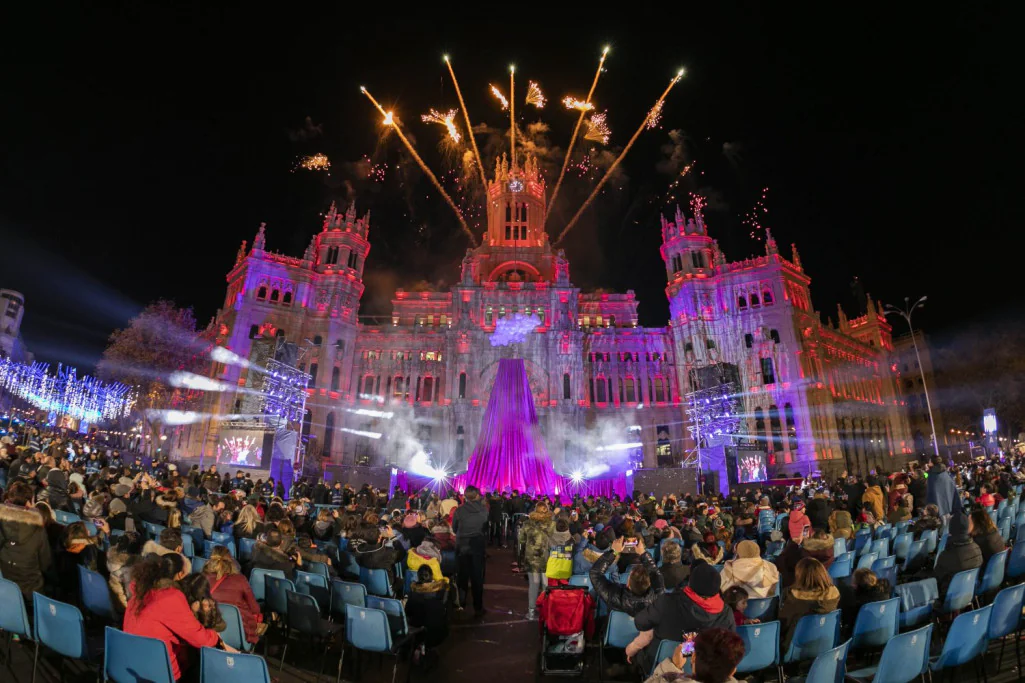
Every December, cities across the world burst into light, music, and motion, each with its own take on what Christmas means. From fiery torch parades in the Italian mountains to tropical floats under the Australian sun, these celebrations reveal how deeply local traditions shape global joy.
Whether you crave midnight choirs, folklore come to life, or a street party with spiced wine and fireworks, these are the Christmas parades, celebrations and parties worth traveling for.
1. Italy – Ndocciata (Agnone, Molise)

History:
The Ndocciata in Agnone (Molise, southern Italy) is one of those Christmas-festive traditions that feels wild and ancient. The festival involves massive torches (‘’ndocce’) made of silver-fir pinewood in fanlike structures, carried through the streets on the evening of December 24. Its roots go back to the Samnite tribes (pre-Roman era) when night-time shifts or torch-lit movements had ritual significance.
Over time it became Christianised; the modern version involves a procession, bagpipers, and a large bonfire (“Bonfire of Brotherhood”) that symbolically cleanses the year and ushers in renewal.

Make the most of your visit:
- Go on the evening of December 24 (Christmas Eve) when the torch march happens, then stay for the bonfire.
- Dress warmly (Molise is inland and can be cold at night).
- Get a spot early along the route so you can watch the torch-bearers up close.
- You’ll find hearty dishes like lamb, rustic breads, strong local wine. Go all in on Agnone’s cheeses and regional charcuterie.
2. Switzerland – Klausjagen (Küssnacht)

History:
Klausjagen (literally “Nicholas chase”) takes place in the town of Küssnacht (Switzerland) on the eve of Saint Nicholas Day. The tradition is believed to stem from pre-Christian wild-spirit chasing rituals (“Wild Hunt”), which were loud, unruly and disapproved by authorities. In 1732 the authorities tried to outlaw it. Later, by the late 19th century the celebration was ‘Christianised’. Since 1928 the local St. Nicholas Society has organized it.
Typical features: men cracking two-handed sheep whips, a group wearing gigantic paper mitres lit from within (Iffelen/Infuln), Saint Nicholas himself with hooded attendants (Schmutzli), brass bands, cow-bells (trycheln) and cow-horns. It all builds to a night of noise and spectacle.
How to make the most of your visit:
- Go on December 5 or 6 (Eve of St. Nicholas) in Küssnacht. Check the exact date that year.
- Arrive early; find a spot along the lakefront or main street where you can observe the mitres glowing from within.
- Bring earplugs if you’re sensitive—those bells and horns are loud!
- Afterwards, warm up with typical Swiss winter fare: rösti, cheese fondue, mulled wine (glühwein) or hot chocolate. In the region (Lake Lucerne side) also try fresh-made sausages or raclette.
3. Spain – Cabalgata de los Reyes Magos (Various cities)

History:
The “Cavalcade of the Magi” (Cabalgata de los Reyes Magos) is held on the evening of January 5 (Epiphany Eve) in towns and cities across Spain. The Three King’s Parade features the three Biblical Magi (Melchior, Caspar and Balthazar) arriving by floats, often with dancers, music, and throwing candy to children.

How to make the most of your visit:
The oldest documented cavalcade is in Barcelona in 1855; the one in Alcoi (Alicante) has been held uninterruptedly since 1885. The tradition reflects the Spanish way of gift-giving (children leave their shoes out, expect the Magi to leave presents) rather than Santa-only giving on Christmas Eve.
- Choose a city with big spectacle (Madrid, Barcelona, Seville) and get your vantage point early along the parade route on Jan 5 evening.
- Bring small reusable bags to collect candy thrown from floats (avoid plastic bags to be more sustainable).
- Afterwards, sample local treats: in Spain at this time you’ll find Roscón de Reyes (a sweet ring-cake with cream or trinket inside), warm churros, and hot chocolate.
- Tip: combine with local architecture/culture earlier in the day (churches, old quarters) so you’re part of the community feeling, not just parade-tourist.
4. Austria – Krampuslauf & Alpine Christmas Parades

History:
In the Alpine regions of Austria (and some neighbouring Bavaria) you’ll find the Krampuslauf: a wild parade where people dressed as the horned demon-figure Krampus accompany St. Nicholas to punish or scare the “naughty” children.
Many Alpine villages hold Krampus parades in the weeks leading to Christmas. The demonic figure is part of folklore dating back to Middle Ages or even pre-Christian Alpine traditions, where the dark twin of the gift-giving saint serves a moral or ritual purpose.
How to make the most of your visit:

- Choose a village in Tyrol or Salzburg region that advertises a Krampuslauf (check schedule ahead).
- Wear warm clothes and good boots (snow/mud possible in Alpine winter).
- For the daytime before the parade, walk the village, enjoy the Christmas market with mulled wine (Glühwein), “Krapfen” (filled doughnuts) and roasted chestnuts.
- At night, join the parade route, but be aware this is not just a “cute” event: there may be noise, fire, whipped chains. Better ask locals for safety viewing spots.
- After the parade, find a cosy guest-house and have a traditional Austrian dinner: Wiener Schnitzel, hearty dumplings, hot punch.
5. Latvia – Riga Christmas Market & festive parade in Riga
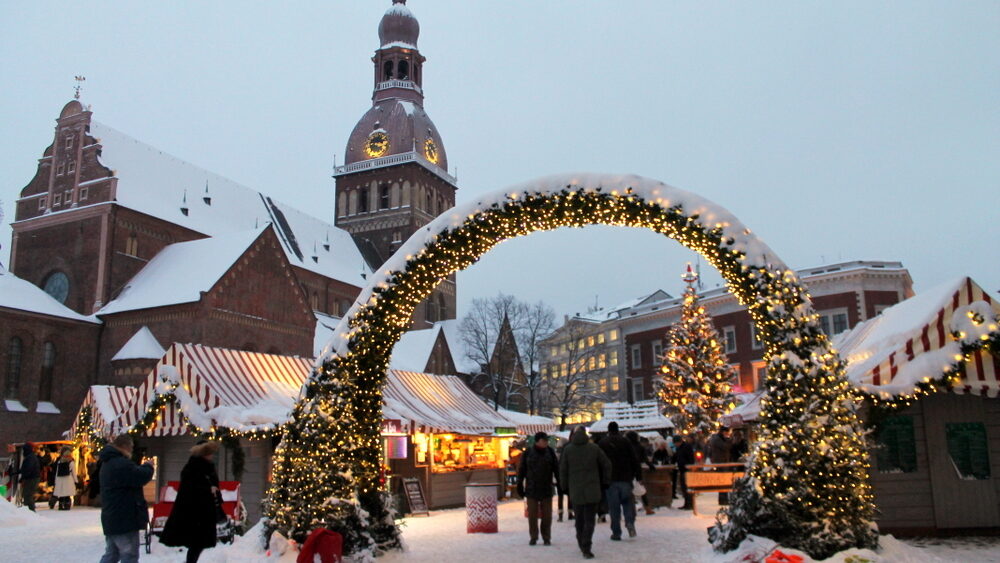
History:
In the Baltic region, the capital of Latvia — Riga — hosts one of the most authentic Christmas markets in Europe, centred on Dome Square beside Riga Cathedral. The earliest documented example of a decorated Christmas tree in Riga is from 1510, when members of the Brotherhood of Blackheads adorned a tree and then burned it after dancing. That’s led some to claim Riga is among the earliest tree-decorating cities. The modern market was revitalized around the year 2000 and has grown into a festive destination.

How to make the most of your visit:
- Visit late November through early January (market open).
- Get there around dusk when the lights go on in Dome Square (makes for great photos).
- Sample local fare: Latvian gingerbread, rye bread with cheese, local craft beers, mulled wine; try “grey peas with bacon” (traditional Latvian dish).
- Explore side-streets of Old Town for smaller artisan shops (wood-carving, amber jewellery) rather than only souvenir shops. This supports local craftspeople.
6. United States – Natchitoches Christmas Festival (Natchitoches, Louisiana)

History:
Over the years, more than 100 set-pieces were added, and today the festival features over 300,000 lights along the Cane River Lake and downtown riverfront. The first parade is believed to have taken place in the 1940s. It is one of the oldest community-based Christmas celebrations in the U.S.
Make the most of your visit:
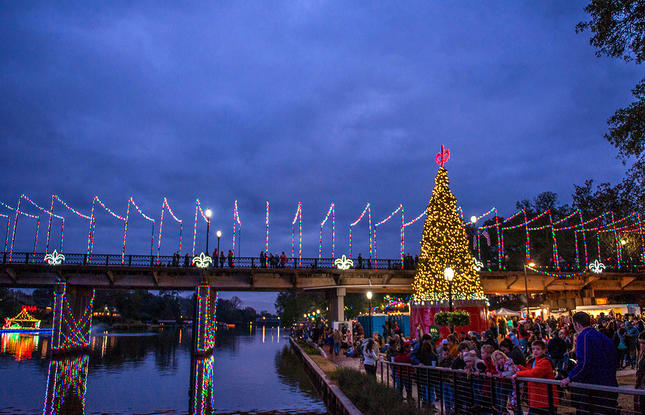
- Visit on the first Saturday of December (or the weekend around it) when the official Festival kicks off.
- Arrive before dusk so you can stroll Front Street and see the lights as they turn on across the river. Then enjoy the evening parade and fireworks.
- Eat local: try the authentic Natchitoches meat pie (a savory pastry with seasoned beef—state-official food in Louisiana). Also sample local gumbo or jambalaya at nearby restaurants.
- Stay in a historic inn or B&B along the riverfront so you absorb the charm of the place and support local lodging.
- Sustainable tip: walk the downtown area (it’s compact) rather than driving; bring a refillable water bottle; bring your own bag for any market purchases.
The Natchitoches Christmas Festival (also called the Festival of Lights) in Natchitoches, Louisiana, was first presented in 1927 when Max Burgdorf (city utilities superintendent) strung up 10-watt bulbs and placed a “Star of the East” on the riverbank.
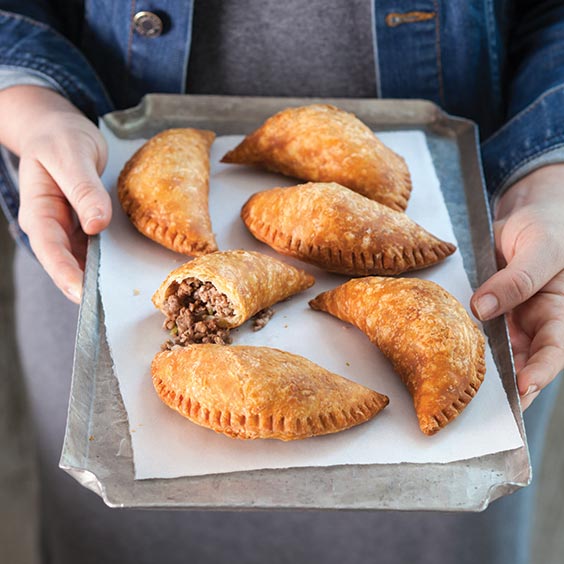
7. Canada – Toronto Santa Claus Parade

History:
We’re using the Toronto Santa Claus Parade as a signature North American example of Christmas parades in a large city, but this particular parade in Toronto has roots dating back to 1905 when Eaton’s department store sponsored the first parade to kick off the holiday shopping season in Toronto. Over time it evolved into a huge spectacle of floats, marching bands, Santa himself and tens of thousands of spectators.

How to make the most of your visit:
- Check the official date (usually mid-to-late November) for 2025; arrive early along Yonge Street or King Street to secure a good view.
- Bring layers (Toronto can be cold and windy in late November).
- Use public transit (TTC/LRT) to avoid parking/choke-point issues.
- Combine your visit with exploring local neighborhoods (Kensington Market, Distillery District Christmas market) to support local cafés and artisans.
- Eat local: try a Canadian holiday treat like butter tarts, or hot apple cider; for more hearty fare sample poutine at a local tavern.
8. Colombia – Alumbrado Navideño de Medellín (Medellín)

History:
The Christmas lights event in Medellín, Colombia is known locally as “Alumbrado Navideño” (officially EPM Lights). The first public Christmas lighting in Medellín was in 1851 on Plaza Mayor, though the large-scale modern version started in 1955 when the public utilities company EPM (Empresas Públicas de Medellín) took charge.

Over time the system expanded into lighting over 100 locations in the city, themed installations along the river and city centre. In 2012 the event was selected among the top ten cities to view holiday lights by National Geographic. This is a large-scale, urban Christmas lighting event spread across a major Latin-American city, integrated with river-front, hillsides and modern themes (even some solar-powered sections).
How to make the most of your visit:
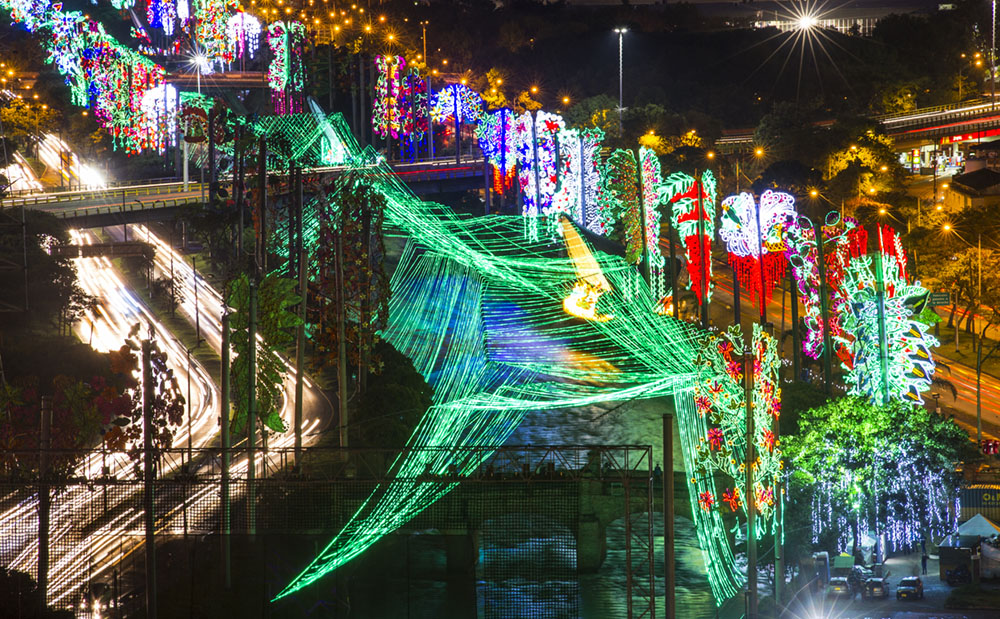
- Visit between early December and early January, when the lights are switched on (often around 7 pm).
- Walk along La Playa Avenue, the riverfront, and Las Palmas road for impressive viewpoints.
- Sample Colombian holiday fare: local arepas, tamales, buñuelos (cheese fritters), hot chocolate (chocolate caliente) with panela. Also sample regional coffee from Antioquia.
- Take public transit (Metro + electric cable car) if you want to reach hillside viewpoints—good for sustainability.
9. Argentina – Carnavalito de Navidad (Argentina – Christmas Carnival)
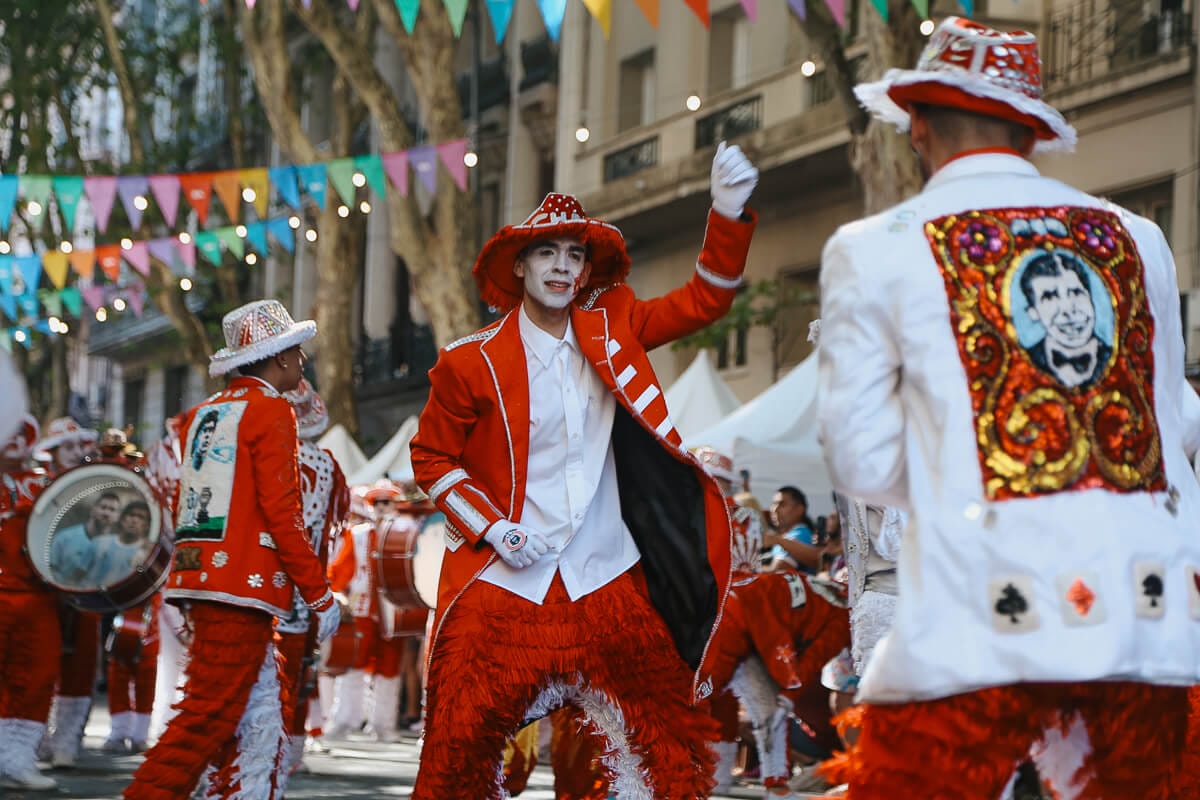

History:
In parts of Argentina the Christmas season includes a lively carnival-style celebration called the “Carnavalito de Navidad” featuring parades, music and traditional dances. In some regions, this combination of “Navidad + Carnavalito” brings the streets alive with music, dance and merriment mixing Christmas traditions with regional cultural expression.

How to make the most of your visit:
- Find out which region hosts the Carnavalito de Navidad (not all of Argentina). Research local municipalities (for example provinces like Jujuy or Salta may have regional parades).
- Go with comfortable shoes—parade routes may be cobbled or uneven.
- Eat local: try Argentine holiday fare such as asado (barbecue), empanadas, pan dulce (sweet bread), and local wine (Malbec).
- Support local artisans: buy handmade decorations or textiles from the parade-markets rather than mass-produced souvenirs.
10. Australia – Darwin Christmas Pageant (Darwin, Northern Territory)

History:
The city of Darwin (Northern Territory, Australia) is hosting the Darwin Christmas Pageant on Saturday 15 November 2025 (according to the City of Darwin website). This community pageant features floats, dancers, performers, Santa Claus and marks the start of the Christmas season in a tropical Australian city. The 2024 event already featured 13,000+ attendees.
Christmas in the tropics! Darwin in late November has lovely warm weather.
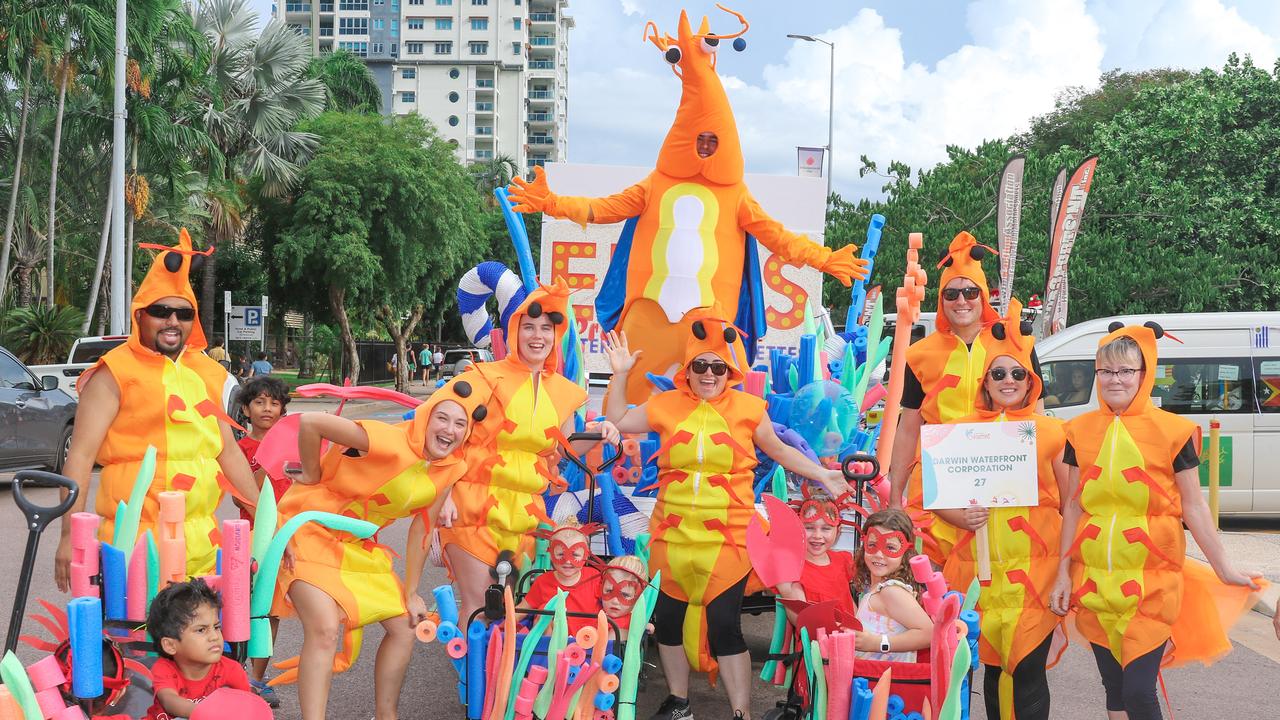
Make the most of your visit:
- Plan to attend on November 15 2025 in the evening (check details for 2025). (darwin.nt.gov.au)
- Arrive early around Knuckey Street & Esplanade to secure a good viewing spot.
- Dress for warm weather: lightweight cotton, comfortable shoes, and bring a hat/sunscreen for early evening.
- After the parade, enjoy local food: in Darwin you’ll find fresh seafood (Barramundi), tropical fruit smoothies, perhaps a Christmas-themed BBQ. Also try local Indigenous-owned café for bush-tucker inspired snacks.
- Cultural respect: Darwin is home to many Indigenous communities—look out for Indigenous art markets or cultural events alongside the parade and consider visiting them to learn about local culture beyond the parade.
Bonus: Additional Unique Traditions for the Inspired Traveler
If you have more time or want to dig deeper, here are a few bonus ideas drawn from interesting regional traditions:
Cerca’s favorite weird Christmas tradition: In Catalonia (Spain) there’s the Tió de Nadal (“pooping log”) tradition. Check out our episode all about it and laugh as much as we did!
In Bolivia, at Christmas there are processions, nativity scene competitions, and indigenous harvest-rituals (Pachamama offerings) mixed in.
In Austria’s Alpine villages the Krampus-runs are sometimes followed by calmer Christmas markets, so combining folk ritual + market is often possible.